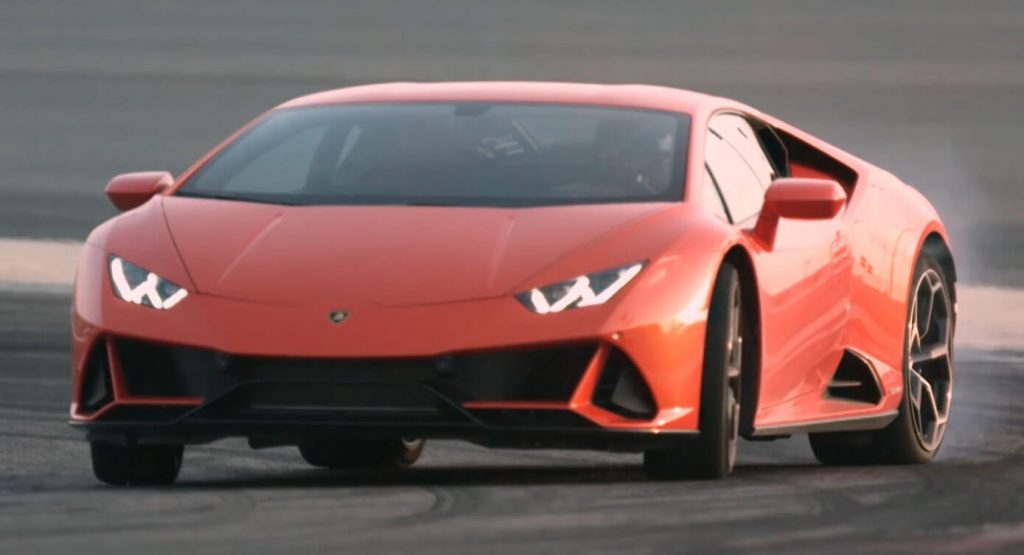Lamborghini has set out to demonstrate how various systems of the new Huracan Evo work, with their latest video focusing on the Lamborghini Dinamica Veicolo Integrata (LDVI).
The LDVI, which translates to Lamborghini Dynamic Vehicle Integration, is the central brain of the car. It can either improve traction or enable a drift by coordinating the all-wheel drive, all-wheel steering, torque vectoring and advanced traction control. It’s also capable of interpreting the driver’s intentions, adapting the vehicle’s behavior to them based on external environment conditions and the selected driving mode.
Also Read: Lamborghini Explains Why The Huracan EVO Doesn’t Have An ‘LP’ Name
Combined with the advanced aerodynamics, improved downforce and a powerful engine, Lamborghini says “the driving emotion [of the Evo] remains unparalleled within the segment”.
Unveiled at the beginning of the year, the new Huracan Evo is a revamped version of the brand’s entry-level supercar. The 5.2-liter naturally aspirated V10 has been upgraded to the output of the Huracan Performante, namely 640 PS (631 hp / 470 kW) and 600 Nm (443 lb-ft) of torque.
With a dry weight of 1,422 kg (3,134 lbs), the Evo has a power-to-weight ratio of 2.22 kg/PS (4.89 lbs/PS); it can thus sprint to 100 km/h (62 mph) in just 2.9 seconds and has a top speed of more than 325 km/h (202 mph).
Lamborghini says that, thanks to the impressive work that has went into it, the Huracan Evo has turned out to be quicker on some sections of the Nardo track than the former Nurburgring lap record holder, the Huracan Performante. Which is quite a feat.
https://www.youtube.com/watch?time_continue=5&v=W-pcpTvPg18



